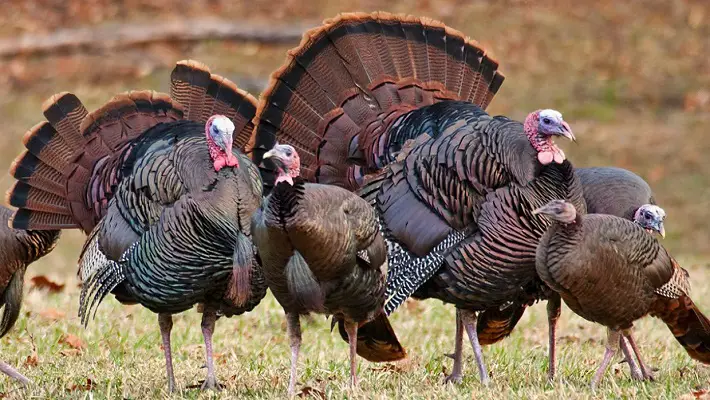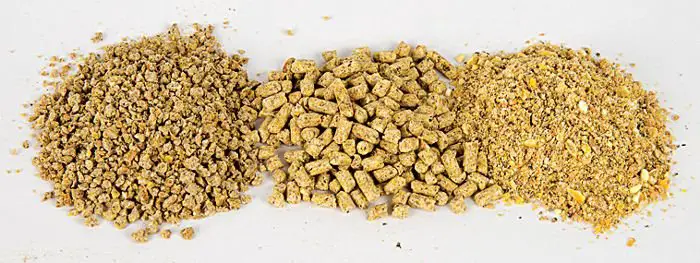Turkey refers to a large bird that can either be found as domesticated or wild bird. These birds have an overall dark color with wings boldly bared with white. Their bare head and neck color varies from red to blue or gray. There are many rumors surrounding the vision of these turkeys with some claiming they are color blind to certain colors. The truth about turkeys is that they have one of the best eyesight among all animals and birds. Turkeys can see green light and all other colors on the visible spectrum and also their sight extend to ultraviolet wavelengths.
To give further clarification on turkeys’ ability to see green light we shall look at what features adapts them to see all the color ranges. The article also seeks to give an elaboration on the concepts of colors from the visible light spectrum. A comparison is also given between humans and turkeys’ vision to see which vision is superior.
Contents
Where Does Light Color Come From
Having mentioned that turkeys can see green light, we need to understand where light color comes from. The color humans and animals see on light comes from a small portion of the electromagnetic spectrum called the visible light. When this light is focused on the eye, it is processed according to the wavelength which then gives different colored lights to the eye. Turkeys have six different types of cone cells for their eyes. These are meant for short, medium and long wavelengths perception. These cone cells also extend to the range for ultraviolet light giving turkeys a vision that is superior to humans. The color variation of the light that humans or turkeys see is mainly due to different wavelengths. Turkeys have a spectrum range that is broad compared to humans and thus have the ability to see more colors compared to humans.
Visible Light Spectrum
What humans and other animals or birds including the turkeys see is what we call visible light, green light inclusive. Visible light is a small portion or part of the electromagnetic spectrum which is visible to the humans and turkeys as well and green light is part of that visible light. The wavelengths of the visible spectrum ranges from 400 nanometers to 700 nanometers. Visible light consists of red, orange, yellow, green, blue, indigo and violet colors which turkeys can see. Red has the longest wavelength and violet the shortest as given in that order. Different other colors emerge from these major spectrum color combinations. The retina cells in the eyes process these colors and observe these different colors according to the wavelength of the light waves. Turkeys have a sight capability of wavelengths from 380 nanometers to 400 nanometers which covers the visible spectrum, green light inclusive.
Can Turkeys See Other Colors
There has been many lies about the ability of turkeys to see other colors. Turkeys can see light of many colors in addition to the green light. We have seen that their sight can extend for light waves extending from 380 nanometers to 400 nanometers which makes them able to see all colors within the visible spectrum. Turkeys can see lights colored red, orange, yellow, green, blue, indigo and violet. Additional colors also from mixture of these major visible light colors are also visible to the eyes of turkeys. In terms of the spectrum range, the turkeys surpass the human eye which cannot see ultraviolet light.
Which Colors Are Not Seen By Turkeys
Having mentioned that turkeys can see green light and all other light within the visible spectrum, someone may think that turkeys can then see all lights which is not true. Turkeys ‘vision is only limited to the visible light and ultraviolet light. Any light which is out of this spectrum range cannot be perceived or seen by the turkeys. This means that turkeys cannot see infrared light which has large wavelength. Turkeys do not have vision for wavelengths that are beyond red light including infrared radiation and x-rays. Despite this limitation, turkeys’ vision for light is very superior to humans.
Turkeys’ Compared To Humans
We now need to look at the comparison between turkeys and humans sight. In overall, turkeys’ vision is superior to humans’ vision despite both being able to see green light. The turkeys’ vision surpass humans’ visions in the following aspects.
- Turkeys can see beyond the visible spectrum, they can also see ultraviolet light which humans cannot see. Human vision is only limited to visible light on the electromagnetic spectrum.
- Turkeys have eyes located on the sides of their heads. This location increases the turkeys’ peripheral vision to nearly 270 degrees of field view as compared to humans with around 180 degrees of field view. When turkeys turn their heads sideways, they can achieve a vision of 360 degrees.
- Turkeys can also see well than humans up to three to four times. In terms of vision distance, turkeys surpass humans again by more than eight times. This implies that turkeys in terms of vision are far much better compared to humans.
- However, just like humans turkeys have a poor night vision. This is due to the fact that they only have one rod cell in their retina which is for low light perception. Additionally, turkeys have a poor 3 dimensional vision capabilities. Their vision is monocular compared to humans which is binocular and is well developed.
It can be clearly seen that turkeys have a great sight. This presents challenges to those involved in turkeys hunting due to the sensitivity of their eyes. Patience is very key when hunting these birds, they are very sensitive to motion and light. They can see movement from a very far distance and easily disappear.
Conclusion
It is clear that turkeys can see green light in addition to all the light within the visible spectrum. Turkeys have a better overall vision when compared to humans. They can see ultraviolet radiation which humans cannot see. Their huge peripheral view gives the turkeys an edge over hunters and other predators.




